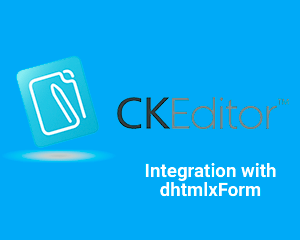

All events use the event namespace, which is simply named. It does not require any action from the developer's side to support it.Īlthough CKEditor uses its own event system, there are four main events which are being exposed to the jQuery event system.

CKEditor also automatically works with the official jQuery Form Plugin for AJAX based forms. This feature can be disabled by setting to false before loading the adapter code.įor elements the editor will automatically return its content back to the form when it is submitted. $( 'textarea.editor' ).val( 'my new content' ) This method works exactly the same as the jQuery version, but additionally it allows to get and set the editor contents. Var editor = $('.jquery_ckeditor').ckeditorGet() īecause setting and retrieving the editor data is a common operation, the jQuery Adapter also provides a dedicated val() method that is an extension of the original jQuery val() method. When an editor instance is ready (after the callback call demonstrated above), the ckeditorGet() method can be used to retrieve the CKEDITOR.editor object that represents an editor instance.

Each of the callback functions will be executed in the context of the CKEDITOR.editor object (so this will be the editor) and the DOM element object will be passed as parameter. On discovering that one editor is already being created, it will wait with the second callback.
#Ckeditor getdata code#
The code presented above will not create two editors. The configuration options are passed through a simple object that contains properties, each one related to a specific editor setting. Configuration options specific to the created editor instance.A callback function to be executed when the editor is ready.The ckeditor() method is the main method of the jQuery adapter. Note that you can also make use of the jQuery chaining. In order to create editor instances, load the usual CKEditor core script file as well as the jQuery Adapter file, in the following order:Īt this point any textarea, p, or div element can be transformed into a rich text editor by using the ckeditor() method. It provides deep integration of CKEditor into jQuery, using its native features. Var editor = CKEDITOR.CKEditor offers native jQuery integration through its jQuery Adapter (a jQuery plugin basically). Only: no attributes, no styles, no other tags. Let's assume our intention is to restrict the editor to accept (produce) paragraphs For example, if the linkĪutomatically allowed. Responsible for this feature is config.allowedContent.īy "automatic mode" is meant that loaded plugins decide which kind It provides a set of easy rules that allow adjusting filtering rulesĪnd disabling the entire feature when necessary. Is an easy and fast way to produce a high-quality, intentionally filtered HTML.Īdvanced Content Filter is enabled by default, working in "automatic mode", yet The tool that precisely restricts which tags, attributes and stylesĪre allowed (desired). This kind of filtering is a first, client-side line of defense Useless HTML tags and attributes so the editor remains "clean" duringĬan be configured and adjusted for a particular case to prevent the It process both HTML that is inserted manually (i.e. Tool that takes control over what kind of data is accepted by the editor and whatĮvery single source of data that comes to the editor.

This sample page demonstrates the idea of Advanced Content Filter


 0 kommentar(er)
0 kommentar(er)
